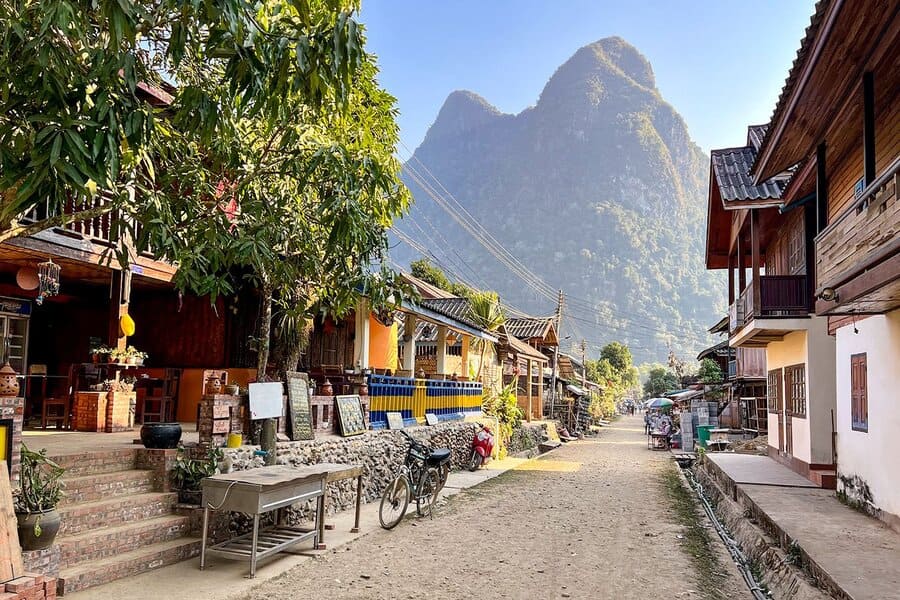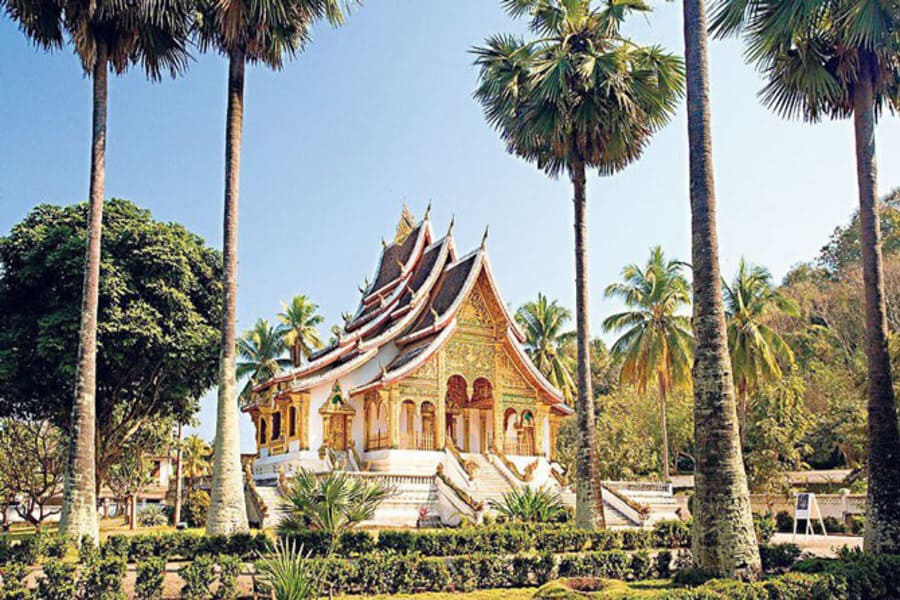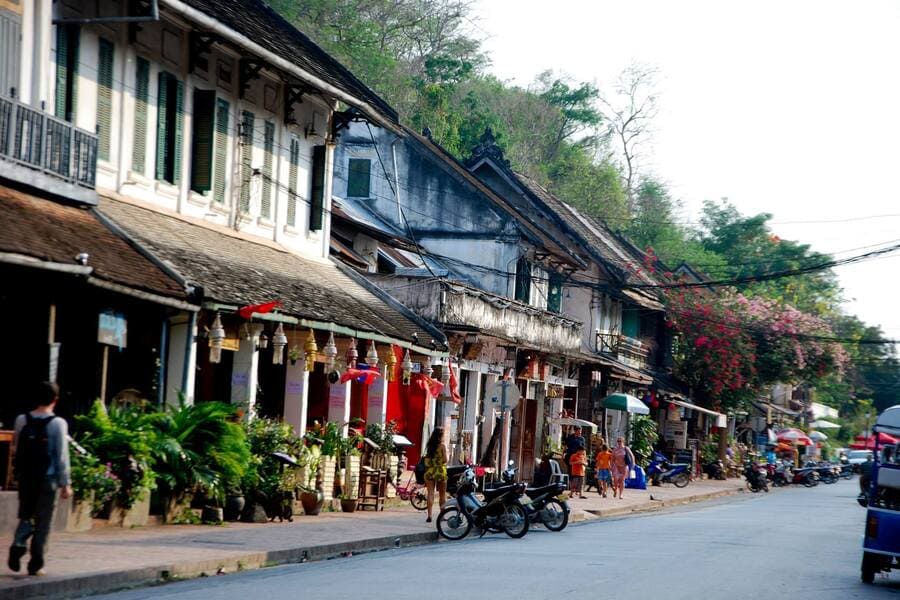Embark on a laos tours to a place where ancient spirituality meets European elegance. Luang Prabang, a UNESCO World Heritage city, beckons with its majestic temples, whispering tales of a rich Buddhist heritage. Wander through charming streets lined with colonial architecture, remnants of a bygone era. Prepare to be enchanted by Luang Prabang, a city where history unfolds on every corner.
Overview of Luang Prabang
Luang Prabang is a captivating city in northern Laos, nestled where the Mekong and Nam Khan rivers meet. It boasts a rich history and cultural significance, earning it a well-deserved spot on the UNESCO World Heritage List.
Why is Luang Prabang known for its temples and colonial architecture?
Luang Prabang and its temple
Luang Prabang is known as the "City of Temples" for good reason. Dozens of magnificent Buddhist temples grace the city, each with its own intricate design and spiritual significance. Wat Xieng Thong, a 16th-century temple adorned with murals, and Wat Mai Suwannapumharam, known for its traditional architecture, are just a few must-sees.
Luang Prabang is known for its temples because of several reasons:
- Seat of Laotian Royalty: For centuries, Luang Prabang served as the capital of the Lao kingdom. This meant it was a center of Buddhism, leading to the construction of numerous temples throughout the city. These temples served not only as religious centers but also as symbols of royal power and cultural heritage.
- Thriving Buddhist Culture: Laos is a predominantly Buddhist country, and Luang Prabang reflects this deeply. The city's many temples represent the strong Buddhist faith practiced for generations. The intricate designs, sculptures, and murals within these temples showcase the artistry and devotion of the Lao people.
Luang Prabang and its colonial architecture
The French colonial influence in Laos is evident in Luang Prabang's charming architecture. Elegant boulevards lined with pastel-colored buildings, French administrative buildings, and remnants of French colonial life add to the city's unique character.
Luang Prabang is known for its colonial architecture because of its unique history and cultural influences
- French Influence: In the late 19th century, France colonized Laos. Luang Prabang, as the royal capital, became a focal point for French administration. The French introduced their architectural styles, leading to the construction of government buildings, boulevards, and villas with distinct European influences.
- Fusion of Styles: The French presence didn't erase the existing Laotian architectural heritage. Instead, it created a fascinating fusion. Traditional Laotian temples co-existed with colonial buildings, resulting in a unique urban landscape that reflects both cultures.
How to get to Luang Prabang?
There are two main ways to get to Luang Prabang, Laos: by plane or by bus.
- By Plane: Luang Prabang International Airport (LPQ) is the city's airport and has connections to major cities in Southeast Asia and China. This is the fastest and most convenient way to get to Luang Prabang. Several airlines serve Luang Prabang, including Vietnam Airlines, Lao Airlines, Bangkok Airways, and China Eastern Airlines.
- By Bus: Traveling to Luang Prabang by bus is a more budget-friendly option, but it takes considerably longer than flying. Buses to Luang Prabang depart from several cities in Laos, Thailand, and Vietnam. The journey can be quite long, ranging from 8 to 18 hours depending on the origin city. However, for the more adventurous traveler, this option offers a chance to see the beautiful Laotian countryside.
What can we do in Luang Prabang?
In Luang Prabang, the city of temples and colonial architecture, you can immerse yourself in a unique blend of history, culture, and scenic beauty. Here are some captivating activities you can enjoy:
Temple Explorations in Luang Prabang
- Morning Almsgiving Ceremony: Witness the daily procession of saffron-robed monks collecting alms from devotees. It's a peaceful and spiritual experience that offers a glimpse into Laotian Buddhist traditions.
- Wat Xieng Thong: Explore this magnificent 16th-century temple adorned with intricate murals depicting Buddhist mythology. Admire the impressive architecture and learn about its historical significance.
- Wat Mai Suwannapumharam: Discover this beautiful temple known for its traditional Laotian architecture and its daily saffron robe-changing ceremony for monks.
- Wat Phon Peu: Climb the 328 steps to the top of Mount Phousi for panoramic views of the city and surrounding landscape. This temple complex offers a serene atmosphere and stunning vistas.
Colonial Architecture Delights in Luang Prabang
- Royal Palace Museum: Delve into the history of Laotian royalty by exploring the former Royal Palace, now a museum. Admire the French colonial architecture and learn about the Lao monarchy.
- Heritage Walking Tour: Embark on a guided walk through Luang Prabang's charming streets lined with colonial buildings. Learn about the French influence on the city's architecture and development.
- Night Market Exploration: Stroll through the vibrant night market and browse through a variety of local handicrafts, textiles, and souvenirs. The French-influenced architecture adds a unique touch to the market atmosphere.
Beyond Temples and Architecture in Luang Prabang
- Kuang Si Waterfall: Take a refreshing dip or admire the cascading beauty of the Kuang Si Waterfall, located just outside Luang Prabang. Relax by the turquoise pools and enjoy the stunning natural scenery.
- Pak Ou Caves: Explore the Pak Ou Caves, filled with thousands of Buddha images nestled along the Mekong River. This unique site offers a glimpse into the deep devotion of the Lao people.
- Cooking Class: Learn the secrets of Laotian cuisine by participating in a cooking class. Discover local ingredients, traditional techniques, and create delicious dishes to savor.
The city offers a glimpse into the deep roots of Laotian Buddhism through its magnificent temples, while also showcasing the architectural legacy left by French colonialism. This combination creates a captivating destination that attracts visitors seeking cultural immersion and historical exploration.




